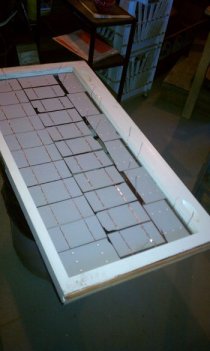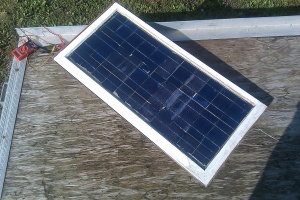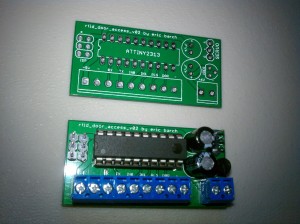Working APN settings for Straight Talk MMS – AT&T SIM Cards
Posted: March 5, 2014 Filed under: Programming | Tags: APN, AT&T, MMS, settings, Straight Talk 6 CommentsWorking Straight Talk AT&T APN Settings:
Go to Android 4 Menu: Settings -> Wireless & Networks -> Mobile Networks -> Access Point Names
Here you should see a list of your APN’s which usually consists of only one. Mine was called Cingular. We want to reset the APN settings to the phone’s default and then edit that one to match the settings below. For reasons why I believe you need to do it this way instead of just adding a new APN please read the details below.
From the APN list:
Press Menu -> Reset to default
Now press the name of the default APN in the list to edit the settings. Set them all to what is below. If you have other options not listed here erase the entry or set them to “Not set”.
Name: Whatever you want. I used “st test”
APN: tfdata
APN type: default,supl,mms
Proxy: Not set
Port: Not set
Username: Not set
Password: Not set
Server: Not set
MMSC: http://mms-tf.net
MMS Proxy: mms3.tracfone.com
MMS port: Not set
MCC: 310
MNC: 410
Authentication type: Not set
APN protocol: IPv4
APN roaming protocol: IPv4
APN enable/disable: APN enabled
Bearer: unspecified
Press MENU -> Save
REBOOT the phone.
Details:
Here are the APN settings that I found to work for my unlocked Doogee DG100 GSM phone. A lot of people including myself have had trouble getting MMS picture messaging to work on their unlocked GSM phones using an AT&T SIM card on the Straight Talk network. I have seen people having “luck” with it just starting to work on their next billing cycle after trying every possible combination of APN settings they found. I have about a month of service left so I was working on finding a solution before my renewal date. After reading through lots of comments and posts lingering around the internet on this subject I seem to have found a solution. Once I did it this way I was able to send and receive picture messages right away without using any other apps, or having to call straight talk customer service. Hopefully this will help others get their MMS picture messaging to work right away.
I originally tried using the settings above in a new APN that I created and told the phone to use. I was unable to send or receive MMS messages. I would receive a Download link in a text message, but when selected it sat there saying Downloading…for a while, then timed out with an Unable to download message. I finally reset the APN settings back to the default, then went in and erased everything in it. Then I put in the settings above and after a quick reboot I was able to send and receive picture messages in mere seconds. There was a note I saw in a post about making sure you leave the port options blank. Straight Talk recommends using port 80, but it is working on my phone from leaving it blank.
I started with a Sprint number which I ported over to Straight Talk. This seemed to be in common with a lot of people having this MMS problem. I think these settings will work for others too.
Leave a Reply and let me know if these settings worked for you.
The Tech Junkies Episode #10 – Alt Energy Pt. 2
Posted: August 17, 2013 Filed under: Vidcast Episodes Leave a commentIn this episode of The Tech Junkies, we follow up with our prior solar installation and show how to add pre-built solar panels to a shed.
Solar Panel Build – More Power!
Posted: January 21, 2012 Filed under: Projects 1 CommentA new solar panel is born – More Power!
As we learned from our feedback, solar cells must all be of the same size/power capacity to hook them in series properly. In the original solar panel we had snapped our third row of cells in half to get them to fit down the remaining glass and make it easy to solder together. That essentially limits the current output of the entire panel because the full size cells are choked by the limited current that can pass through the snapped cells. So we built another panel using all complete cells. It made it take a little longer wiring the cells together since we couldn’t just run down the straight line of them all, but we found that using tabbing wire for everything worked good. If you bend or fold the tabbing wire to make 90 degree angles it made it pretty easy to solder to the next cell.
Laying out the new solar panel
Solar Panel Build
Posted: October 3, 2011 Filed under: Projects 2 CommentsMake sure to read both the Wind Turbine Build and the Solar Panel Build. Then watch The Tech Junkies Episode #9 that documents it all and puts them to the test!
Solar has really come down in price since the last time I looked. We wondered if we could start powering our shop off of solar. A good project would be to see if we can build a small scale solar array which would generate power back to the shop and keep it under $1/watt. This would have to include everything from the solar cells to getting usable power out the other end. So we started searching around.
Wind Turbine Build
Posted: October 3, 2011 Filed under: Projects 12 CommentsMake sure to read both the Wind Turbine Build and the Solar Panel Build. Then watch The Tech Junkies Episode #9 that documents it all and puts them to the test!
For this build we wanted to make a low cost wind turbine that could give us some good usable power at a low dollar-per-watt budget. We started out designing a 7′ 6″ diameter turbine and used a motor that has a max output of 1,100 Watts. Our goal is to make a wind turbine that costs less than $1 per watt to build and operate. This includes the tower, the wind turbine, and the inverter to tie it in to our electrical system. We were pressed for time on this build because we had very high winds forcasted just two days after we started the build. We needed to come up with something quick to get this thing in the air and see what it could do.
The Tech Junkies Episode #9 – Alt Energy Pt. 1
Posted: October 3, 2011 Filed under: Vidcast Episodes 3 CommentsIn this episode the Tech Junkies tackle cheap alternative energy systems. Ben and Eric guide you through the process of assembling your own solar panels for around 50 cents per watt and how to construct a low cost wind turbine. This is only the beginning…more to come in part two!
More details here:
Wind Turbine Build
Solar Panel Build
TTJ Episode #9 Teaser (Alt Energy)
Posted: September 30, 2011 Filed under: News Leave a commentEpisode 9 should be hitting the site within the next week…until then, enjoy the teaser!
RFID Tag Cloning
Posted: September 18, 2011 Filed under: Projects 12 CommentsIn the second half of the RFID TTJ episode we covered how to clone or spoof an existing RFID tag. This was partially to expose the security flaws of RFID, but also because it can be very useful. I’ve stayed in a few apartments now that require an RFID tag to get in and out of the main gate. Sometimes you’ll end up getting only one or two RFID tags for the main gate when you have more people living in the same apartment. It’s also inconvenient if you have friends that come over often and you have to let them into the gate every time.
Almost all of this information and work was put together by Micah Elizabeth Scott over at scanlime.org. We simply experimented with the technology and found what works best for us.
RFID Door Lock
Posted: September 16, 2011 Filed under: Projects 47 CommentsI’ve been a college student for a few years now and one of the first things that I hacked together while staying in a dorm room was an RFID (Radio Frequency Identification) lock. I was always in a rush to get in and out of my room and having a wireless key made it that much easier. The challenging bit was that I needed to be able to attach it to my door without modifying any of the hardware and I also wanted it to be hidden from the outside. My first prototype was pretty rough, but over the past year I’ve refined my design and finished a minimalistic circuit board.
The Tech Junkies Episode #8 – RFID Lock & Spoofing
Posted: September 16, 2011 Filed under: Vidcast Episodes 2 CommentsIn this episode of TTJ we show you how to build your very own RFID door lock using our open source plans. We also take it to the next step and show you how RFID tags can be read and duplicated.
Make sure to get all the details and source code in the episode writeups:
RFID Door Lock
RFID Tag Cloning




